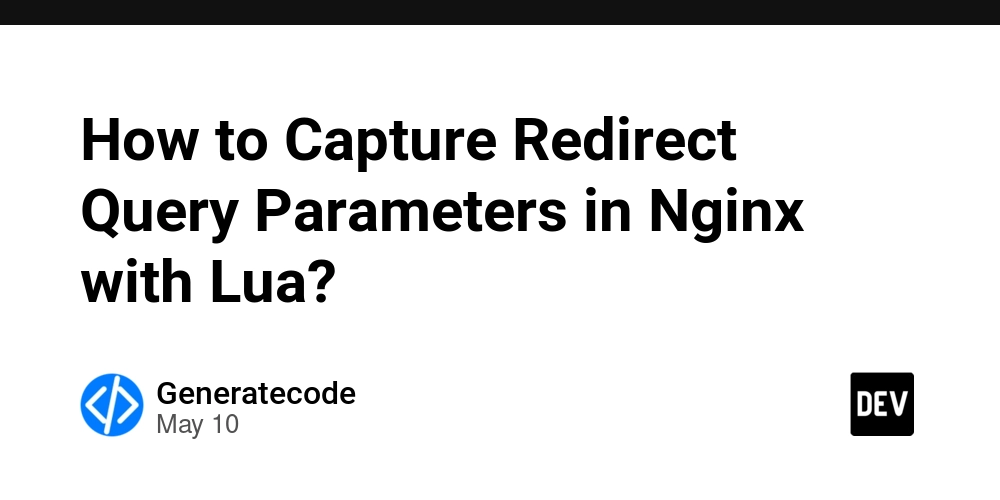Setting up Parseable with Kubernetes and Docker Desktop
Setting up Parseable with Kubernetes and Docker Desktop This guide will walk you through setting up Parseable, a modern log analytics platform, using Kubernetes on Docker Desktop. We'll cover the complete setup process including MinIO for storage, Parseable deployment using Helm, and configuring ingress for external access. Prerequisites Before we begin, ensure you have the following prerequisites installed and configured: Docker Desktop with Kubernetes enabled Ingress-NGINX controller deployed on your Kubernetes cluster kubectl configured to work with your Docker Desktop Kubernetes cluster Ansible configured to run playbooks Table of Contents Setting up MinIO Deploying Parseable using Helm Configuring Ingress Complete Ansible Playbook Setting up MinIO MinIO is an object storage system that Parseable uses for storing logs. Let's set it up first. Deploying MinIO We'll use Helm to deploy MinIO with some basic configuration. This setup creates a MinIO instance with a root user (minioadmin), configures a 10GB persistent volume for storage, and creates a bucket named "parseable". Additionally, we set up a service account with specific permissions - the account has access keys configured and is granted permissions to perform read, write and delete operations on objects within the parseable bucket, as well as list the bucket contents. This configuration ensures Parseable will have the necessary permissions to store and manage logs in MinIO. - name: Deploy MinIO using Helm kubernetes.core.helm: release_name: minio release_namespace: minio chart_ref: minio chart_repo_url: https://charts.min.io create_namespace: true release_values: rootUser: minioadmin rootPassword: minioadmin persistence: size: 10Gi buckets: - name: parseable policy: none purge: false svcaccts: - accessKey: parseable secretKey: 'parseable' user: console policy: statements: - resources: - arn:aws:s3:::parseable/* actions: - s3:GetObject - s3:PutObject - s3:DeleteObject - resources: - arn:aws:s3:::parseable actions: - s3:ListBucket Deploying Parseable Now that we have MinIO set up, let's deploy Parseable using its Helm chart. Installing Parseable The following Ansible code block deploys Parseable using two tasks. The first task creates a Kubernetes Secret containing essential configuration parameters for Parseable, including MinIO connection details (like the service URL, access credentials, and bucket name), network settings, storage directories, and admin authentication credentials. All these values are base64 encoded as required for Kubernetes Secrets. The second task uses Helm to deploy the actual Parseable application, utilizing the official Helm chart from the Parseable repository and configuring it to use S3 (MinIO) as its storage backend. - name: Deploy Parseable configuration kubernetes.core.k8s: state: present definition: apiVersion: v1 kind: Secret metadata: name: parseable-env-secret namespace: parseable data: s3.url: "{{ 'https://minio.minio.svc.cluster.local:9000' | b64encode }}" s3.access.key: "{{ 'parseable' | b64encode }}" s3.secret.key: "{{ 'parseable' | b64encode }}" s3.bucket: "{{ 'parseable' | b64encode }}" addr: "{{ '0.0.0.0:8000 | b64encode }}" staging.dir: "{{ './staging' | b64encode }}" fs.dir: "{{ './data' | b64encode }}" username: "{{ 'parseable' | b64encode }}" password: "{{ 'parseable' | b64encode }}" - name: Deploy Parseable helm chart kubernetes.core.helm: name: parseable chart_ref: parseable chart_repo_url: https://charts.parseable.com release_namespace: parseable values: parseable: store: s3-store Configuring Ingress To expose the Parseable ingest API endpoint for log ingestion, we'll create an Ingress resource that routes requests through the /logs path prefix. This approach both limits external access to just the ingest API and avoids CORS issues, while keeping the UI and other endpoints private within the cluster. Creating Ingress Resource - name: Deploy the Parseable ingress kubernetes.core.k8s: state: present definition: apiVersion: networking.k8s.io/v1 kind: Ingress metadata: name: parseable-ingress namespace: parseable annotations: kubernetes.io/ingress.class: nginx nginx.ingress.kubernetes.io/use-regex: "true" nginx.ingress.kubernetes.io/rewrite-target: /api/v1/ingest/$2 spec: rules: - hos

Setting up Parseable with Kubernetes and Docker Desktop
This guide will walk you through setting up Parseable, a modern log analytics platform, using Kubernetes on Docker Desktop. We'll cover the complete setup process including MinIO for storage, Parseable deployment using Helm, and configuring ingress for external access.
Prerequisites
Before we begin, ensure you have the following prerequisites installed and configured:
- Docker Desktop with Kubernetes enabled
- Ingress-NGINX controller deployed on your Kubernetes cluster
-
kubectlconfigured to work with your Docker Desktop Kubernetes cluster - Ansible configured to run playbooks
Table of Contents
- Setting up MinIO
- Deploying Parseable using Helm
- Configuring Ingress
- Complete Ansible Playbook
Setting up MinIO
MinIO is an object storage system that Parseable uses for storing logs. Let's set it up first.
Deploying MinIO
We'll use Helm to deploy MinIO with some basic configuration. This setup creates a MinIO instance with a root user (minioadmin), configures a 10GB persistent volume for storage, and creates a bucket named "parseable". Additionally, we set up a service account with specific permissions - the account has access keys configured and is granted permissions to perform read, write and delete operations on objects within the parseable bucket, as well as list the bucket contents. This configuration ensures Parseable will have the necessary permissions to store and manage logs in MinIO.
- name: Deploy MinIO using Helm
kubernetes.core.helm:
release_name: minio
release_namespace: minio
chart_ref: minio
chart_repo_url: https://charts.min.io
create_namespace: true
release_values:
rootUser: minioadmin
rootPassword: minioadmin
persistence:
size: 10Gi
buckets:
- name: parseable
policy: none
purge: false
svcaccts:
- accessKey: parseable
secretKey: 'parseable'
user: console
policy:
statements:
- resources:
- arn:aws:s3:::parseable/*
actions:
- s3:GetObject
- s3:PutObject
- s3:DeleteObject
- resources:
- arn:aws:s3:::parseable
actions:
- s3:ListBucket
Deploying Parseable
Now that we have MinIO set up, let's deploy Parseable using its Helm chart.
Installing Parseable
The following Ansible code block deploys Parseable using two tasks. The first task creates a Kubernetes Secret containing essential configuration parameters for Parseable, including MinIO connection details (like the service URL, access credentials, and bucket name), network settings, storage directories, and admin authentication credentials. All these values are base64 encoded as required for Kubernetes Secrets. The second task uses Helm to deploy the actual Parseable application, utilizing the official Helm chart from the Parseable repository and configuring it to use S3 (MinIO) as its storage backend.
- name: Deploy Parseable configuration
kubernetes.core.k8s:
state: present
definition:
apiVersion: v1
kind: Secret
metadata:
name: parseable-env-secret
namespace: parseable
data:
s3.url: "{{ 'https://minio.minio.svc.cluster.local:9000' | b64encode }}"
s3.access.key: "{{ 'parseable' | b64encode }}"
s3.secret.key: "{{ 'parseable' | b64encode }}"
s3.bucket: "{{ 'parseable' | b64encode }}"
addr: "{{ '0.0.0.0:8000 | b64encode }}"
staging.dir: "{{ './staging' | b64encode }}"
fs.dir: "{{ './data' | b64encode }}"
username: "{{ 'parseable' | b64encode }}"
password: "{{ 'parseable' | b64encode }}"
- name: Deploy Parseable helm chart
kubernetes.core.helm:
name: parseable
chart_ref: parseable
chart_repo_url: https://charts.parseable.com
release_namespace: parseable
values:
parseable:
store: s3-store
Configuring Ingress
To expose the Parseable ingest API endpoint for log ingestion, we'll create an Ingress resource that routes requests through the /logs path prefix. This approach both limits external access to just the ingest API and avoids CORS issues, while keeping the UI and other endpoints private within the cluster.
Creating Ingress Resource
- name: Deploy the Parseable ingress
kubernetes.core.k8s:
state: present
definition:
apiVersion: networking.k8s.io/v1
kind: Ingress
metadata:
name: parseable-ingress
namespace: parseable
annotations:
kubernetes.io/ingress.class: nginx
nginx.ingress.kubernetes.io/use-regex: "true"
nginx.ingress.kubernetes.io/rewrite-target: /api/v1/ingest/$2
spec:
rules:
- host: parseable.local
http:
paths:
- path: /logs/api/v1/ingest(/|$)(.*)
pathType: ImplementationSpecific
backend:
service:
name: parseable
port:
number: 80
Complete Ansible Playbook
For convenience, here's a complete Ansible playbook that combines all the tasks we've discussed. Create a file named deploy-parseable.yml with the following content:
---
- name: Deploy Parseable Stack
hosts: localhost
connection: local
tasks:
- name: Deploy MinIO using Helm
kubernetes.core.helm:
release_name: minio
release_namespace: minio
chart_ref: minio
chart_repo_url: https://charts.min.io
create_namespace: true
release_values:
rootUser: minioadmin
rootPassword: minioadmin
persistence:
size: 10Gi
buckets:
- name: parseable
policy: none
purge: false
svcaccts:
- accessKey: parseable
secretKey: 'parseable'
user: console
policy:
statements:
- resources:
- arn:aws:s3:::parseable/*
actions:
- s3:GetObject
- s3:PutObject
- s3:DeleteObject
- resources:
- arn:aws:s3:::parseable
actions:
- s3:ListBucket
- name: Deploy Parseable configuration
kubernetes.core.k8s:
state: present
definition:
apiVersion: v1
kind: Secret
metadata:
name: parseable-env-secret
namespace: parseable
data:
s3.url: "{{ 'https://minio.minio.svc.cluster.local:9000' | b64encode }}"
s3.access.key: "{{ 'parseable' | b64encode }}"
s3.secret.key: "{{ 'parseable' | b64encode }}"
s3.bucket: "{{ 'parseable' | b64encode }}"
addr: "{{ '0.0.0.0:8000' | b64encode }}"
staging.dir: "{{ './staging' | b64encode }}"
fs.dir: "{{ './data' | b64encode }}"
username: "{{ 'parseable' | b64encode }}"
password: "{{ 'parseable' | b64encode }}"
- name: Deploy Parseable helm chart
kubernetes.core.helm:
name: parseable
chart_ref: parseable
chart_repo_url: https://charts.parseable.com
release_namespace: parseable
values:
parseable:
store: s3-store
- name: Deploy the Parseable ingress
kubernetes.core.k8s:
state: present
definition:
apiVersion: networking.k8s.io/v1
kind: Ingress
metadata:
name: parseable-ingress
namespace: parseable
annotations:
kubernetes.io/ingress.class: nginx
nginx.ingress.kubernetes.io/use-regex: "true"
nginx.ingress.kubernetes.io/rewrite-target: /api/v1/ingest/$2
spec:
rules:
- host: parseable.local
http:
paths:
- path: /logs/api/v1/ingest(/|$)(.*)
pathType: ImplementationSpecific
backend:
service:
name: parseable
port:
number: 80
Run the complete playbook with:
ansible-playbook deploy-parseable.yml
Accessing Parseable
Once deployed, you can access the Parseable UI by setting up port forwarding from your local machine to the Parseable service in the cluster. Run the following command to forward port 8000 on your local machine to port 80 of the Parseable service:
kubectl port-forward -n parseable svc/parseable 8000:80
You can now send logs to Parseable by making POST requests to the ingress endpoint at host.docker.internal/logs/api/v1/ingest. Here's an example curl command that demonstrates how to send logs:
curl -X POST http://host.docker.internal/logs/api/v1/ingest \
-H "Content-Type: application/json" \
-H "X-P-Stream: my-logs" \
-H "Authorization: Basic $(echo -n 'parseable:parseable' | base64)" \
-d '{
"timestamp": "2024-03-20T10:00:00Z",
"level": "INFO",
"message": "Application started",
"service": "my-service",
"environment": "development"
}'
In this example:
-
X-P-Streamheader specifies the log stream name -
Authorizationheader contains the base64-encoded credentials (username:password) - The JSON payload contains structured log data with:
-
timestamp: ISO 8601 formatted timestamp -
level: Log level (INFO, ERROR, etc.) -
message: The actual log message - Additional fields for context (service, environment, etc.)
-
You can send multiple log entries in a single request by using an array:
curl -X POST http://host.docker.internal/logs/api/v1/ingest \
-H "Content-Type: application/json" \
-H "X-P-Stream: my-logs" \
-H "Authorization: Basic $(echo -n 'parseable:parseable' | base64)" \
-d '[
{
"timestamp": "2024-03-20T10:00:00Z",
"level": "INFO",
"message": "Application started",
"service": "my-service"
},
{
"timestamp": "2024-03-20T10:00:01Z",
"level": "INFO",
"message": "Database connection established",
"service": "my-service"
}
]'
After sending some sample logs, you can view them in the Parseable UI by accessing localhost:8000 in your browser:
Next Steps
Now that you have Parseable up and running, here are some recommended next steps to enhance your logging setup:
-
Configure Client-Side Log Shipping
- Implement pino.js in your frontend applications for structured logging
- Set up a custom transport to send logs directly to Parseable's ingest endpoint
- Configure log levels and formatting for optimal analysis
- Implement error tracking and performance monitoring
-
Integrate with Grafana
- Add Parseable as a data source in Grafana
- Create dashboards to visualize your logs
- Set up alerts based on log patterns and thresholds
- Configure log exploration and analysis workflows
-
Implement Authentication with OpenID Connect
- Set up Keycloak as your identity provider
- Configure Parseable to use OpenID Connect for authentication
- Define user roles and permissions
- Implement SSO (Single Sign-On) for your logging platform
Each of these steps will be covered in detail in upcoming articles. Would you like to proceed with any specific integration first?
Troubleshooting
If you encounter any issues during the setup, check the following:
- Verify all pods are running:
kubectl get pods -A
- Check MinIO logs:
kubectl logs -n minio -l app=minio
- Check Parseable logs:
kubectl logs -l app.kubernetes.io/name=parseable
Conclusion
You now have a fully functional Parseable instance running on your local Kubernetes cluster. This setup provides a solid foundation for log analytics and monitoring in your development environment.











































































































































































![[The AI Show Episode 146]: Rise of “AI-First” Companies, AI Job Disruption, GPT-4o Update Gets Rolled Back, How Big Consulting Firms Use AI, and Meta AI App](https://www.marketingaiinstitute.com/hubfs/ep%20146%20cover.png)































































































































![Ditching a Microsoft Job to Enter Startup Hell with Lonewolf Engineer Sam Crombie [Podcast #171]](https://cdn.hashnode.com/res/hashnode/image/upload/v1746753508177/0cd57f66-fdb0-4972-b285-1443a7db39fc.png?#)



























































.jpg?width=1920&height=1920&fit=bounds&quality=70&format=jpg&auto=webp#)




















































-Nintendo-Switch-2-Hands-On-Preview-Mario-Kart-World-Impressions-&-More!-00-10-30.png?width=1920&height=1920&fit=bounds&quality=70&format=jpg&auto=webp#)










































































































-xl.jpg)





























![New iPad 11 (A16) On Sale for Just $277.78! [Lowest Price Ever]](https://www.iclarified.com/images/news/97273/97273/97273-640.jpg)

![Apple Foldable iPhone to Feature New Display Tech, 19% Thinner Panel [Rumor]](https://www.iclarified.com/images/news/97271/97271/97271-640.jpg)







































































![[Weekly funding roundup May 3-9] VC inflow into Indian startups touches new high](https://images.yourstory.com/cs/2/220356402d6d11e9aa979329348d4c3e/WeeklyFundingRoundupNewLogo1-1739546168054.jpg)




























